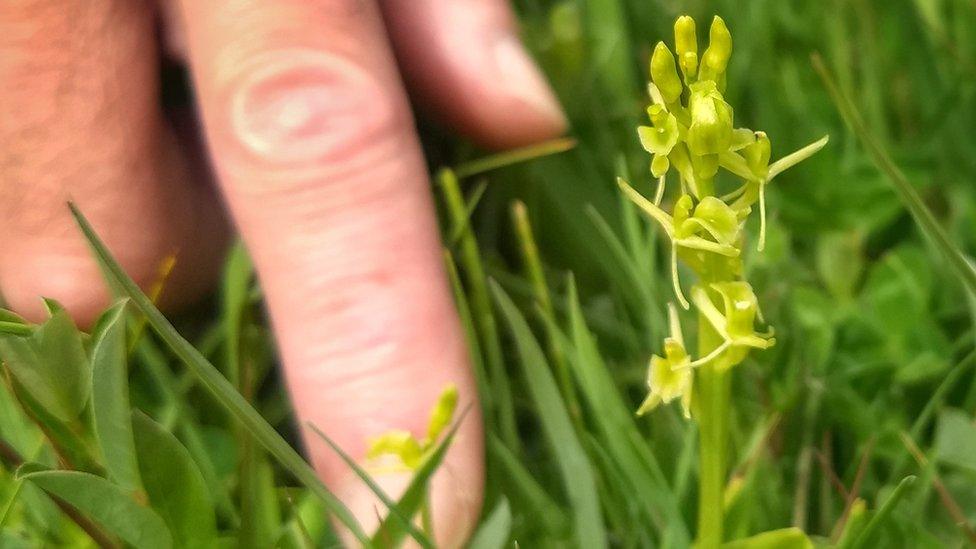Kenfig 'super-rare' fen orchid numbers rise to 4,000
- Published

Numbers up... there was concern the fen orchid could disappear but numbers have increased
A project to save a "super-rare" orchid from extinction has seen numbers rise from 200 to 4,000 in eight years.
Concern for the future of the fen orchid prompted action among the sand dunes at Kenfig National Nature Reserve, Bridgend, in 2011.
Wardens can no longer count them in one day as there are so many, according to the Local Democracy Reporting Service.
The success has been attributed to the work of wardens and volunteers managing the 1,300-acre (530-hectare) reserve.
They have cut back grass and scraped the surface of dune slacks - a low-lying area between dunes - to encourage and stimulate growth, according to Councillor Richard Young, Bridgend council's cabinet member for communities.
Fen orchids thrive on bare areas of damp ground left behind by moving sand blown by the wind and Kenfig is its last stronghold.
Aerial photographs in the 1940s showed nearly half of Kenfig Burrows was open, bare sand but that reduced to 2% a decade ago.
The orchid's overall population was nearer 100,000 in the 1980s when it existed in a wider area around the Bristol Channel.
The reserve is managed jointly by Bridgend County Borough Council and Natural Resources Wales.
But the lease expires soon and officials are trying to find new managers.
- Published19 December 2018
